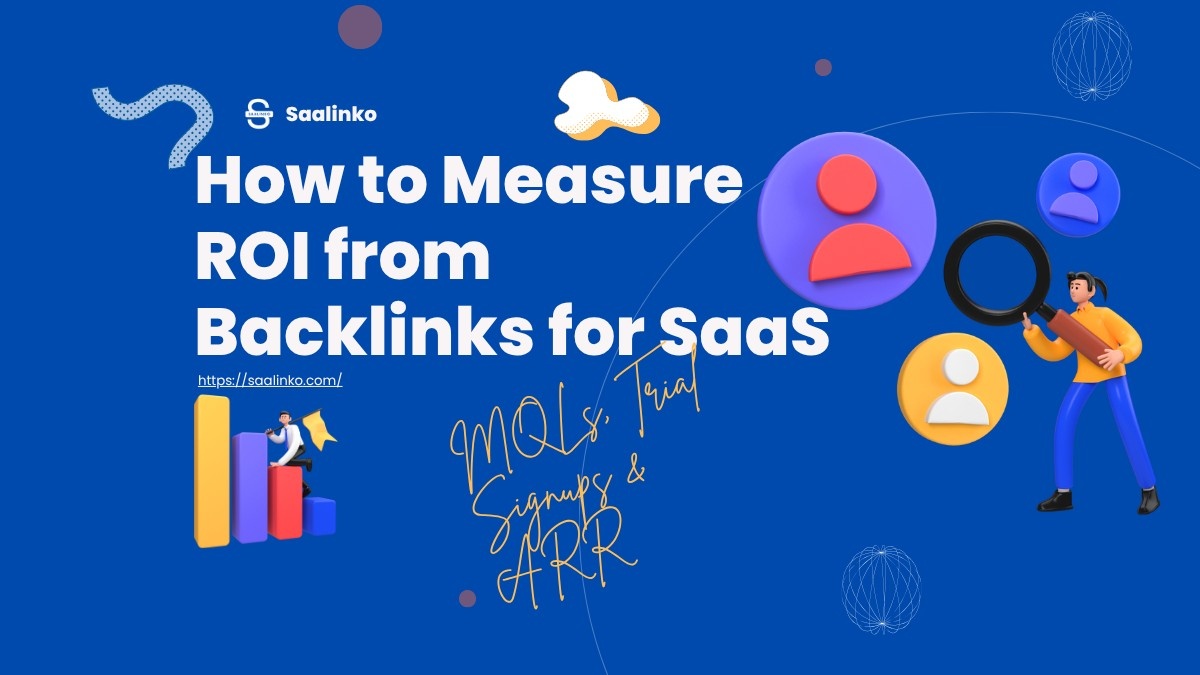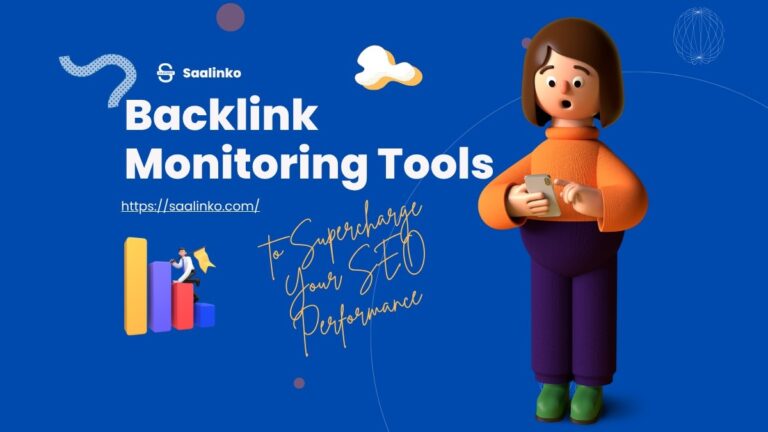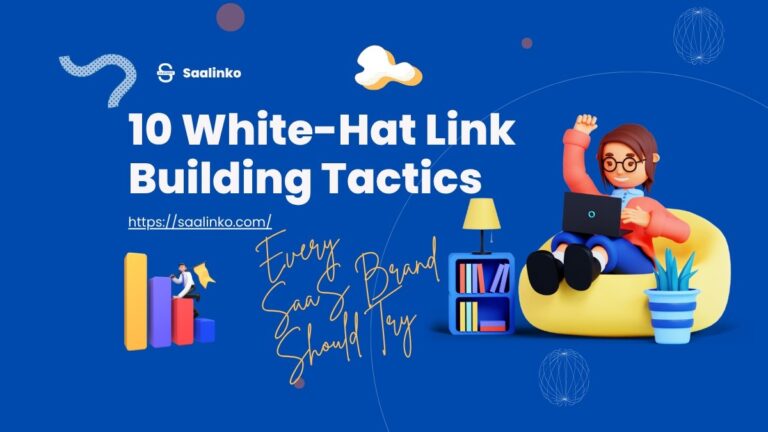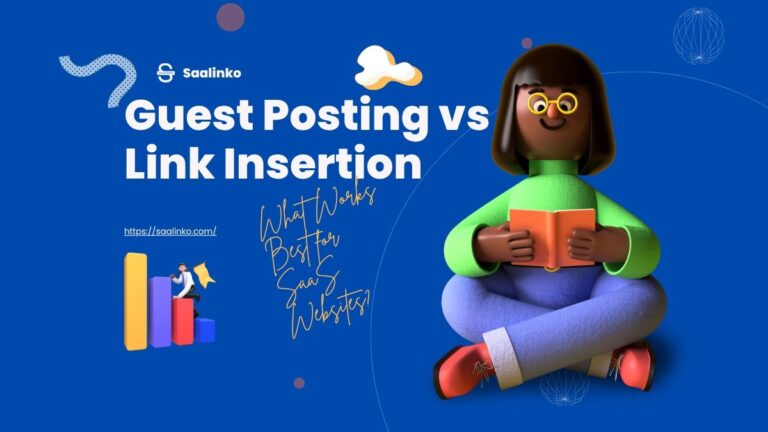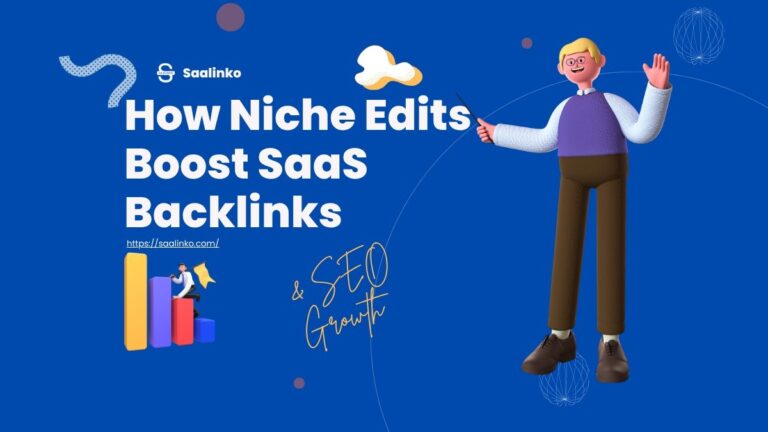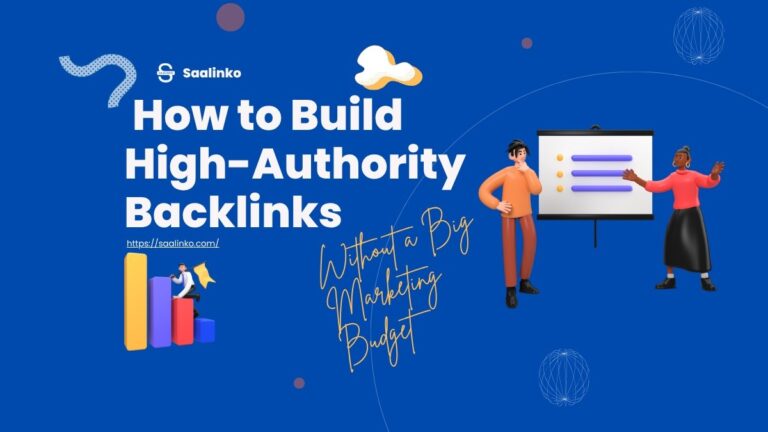Backlinks are often called the backbone of SEO, but for SaaS products, they can mean much more than just higher Google rankings. They can directly impact your marketing-qualified leads (MQLs), trial signups, and even your annual recurring revenue (ARR).
If you’ve ever wondered, “How do I actually measure ROI from backlinks for my SaaS product?”, this guide will simplify it for you, step by step.
Why Backlinks Matter for SaaS Businesses
Backlinks are essentially votes of confidence from other websites. Google sees them as a signal that your website is credible and trustworthy.
For SaaS companies, backlinks do more than just improve SEO rankings—they can:
- Drive targeted traffic to your website
- Increase trial signups and demo requests
- Boost brand awareness
- Influence your ARR indirectly by attracting high-quality leads
Quick Stat
According to a 2023 Ahrefs study, websites in the top 10 search results have an average of 3.8x more referring domains than those ranking 11–20.
This shows how backlinks not only help SEO but also generate meaningful leads for SaaS businesses.
Step 1: Set Clear SaaS Conversion Goals
Before measuring ROI, you need to define what matters to your SaaS business. Common goals include:
- Marketing Qualified Leads (MQLs): Leads that show high intent or match your ICP (Ideal Customer Profile)
- Trial Signups: Free or limited trial registrations
- Paid Signups / ARR: Customers converting to paid plans
Make sure your analytics platforms (Google Analytics, HubSpot, or Mixpanel) track these goals accurately. Without tracking, ROI measurement becomes guesswork.
Step 2: Track Backlink Traffic Accurately
To measure ROI from backlinks, you first need to understand which backlinks actually drive traffic.
Tools You Can Use:
- Google Analytics: Track referral traffic from specific domains
- Ahrefs / SEMrush: Monitor backlinks and domain authority
- HubSpot or Salesforce: Tie website traffic to MQLs and trials
Pro Tip:
Use UTM parameters for backlinks in guest posts, link insertions, or PR campaigns. This helps identify traffic and conversions from each backlink accurately.
Step 3: Attribute Leads and Signups to Backlinks
Not every backlink drives revenue, so you need proper attribution.
Multi-Touch Attribution
SaaS buyers often interact with your website multiple times before converting. Use multi-touch attribution to credit backlinks that contributed at different stages:
- First-touch: The backlink that first introduced the user to your brand
- Last-touch: The backlink that influenced the final signup
- Multi-touch: Assigns weighted value to every backlink interaction
By mapping backlink-driven traffic to MQLs or trial signups, you can quantify lead quality.
Quick Stat
According to a 2022 SaaS Benchmark Report, backlinks accounted for 27% of first-touch MQLs for SaaS companies focusing on content marketing.
Step 4: Calculate Revenue Contribution (ARR)
Once you know which backlinks drive signups, you can calculate revenue contribution.
Here’s a simple formula:
ARR from backlinks = (Trial Signups from backlinks × Conversion rate to paid) × Average ARR per customer
Example:
- 100 trial signups from backlinks
- 25% convert to paid plans
- Average ARR = $1,200
ARR from backlinks = 100 × 0.25 × 1200 = $30,000
This gives you a clear number to compare against your backlink acquisition cost.
Step 5: Calculate ROI from Backlinks
Finally, calculate ROI to see if your backlink strategy is profitable.
ROI formula:ROI=Revenue from backlinks−Cost of backlinksCost of backlinks×100\text{ROI} = \frac{\text{Revenue from backlinks} – \text{Cost of backlinks}}{\text{Cost of backlinks}} \times 100ROI=Cost of backlinksRevenue from backlinks−Cost of backlinks×100
Example:
- Revenue from backlinks = $30,000
- Cost of backlink outreach / creation = $5,000
ROI=30,000−5,0005,000×100=500%ROI = \frac{30,000 – 5,000}{5,000} \times 100 = 500\%ROI=5,00030,000−5,000×100=500%
A 500% ROI clearly shows backlinks are highly profitable for your SaaS business.
Step 6: Use AI Tools to Optimize Backlink ROI
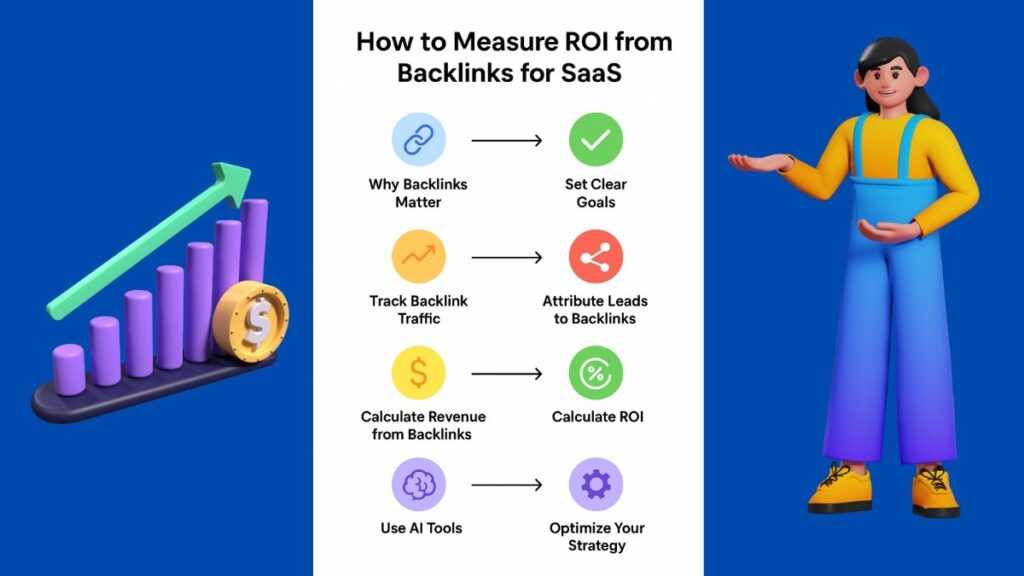
AI tools can make measuring ROI easier and more precise:
- AI for Content Outreach: Tools like Jasper or ChatGPT can draft personalized outreach emails faster, reducing outreach cost.
- AI for Link Monitoring: Tools like LinkGraph AI can monitor live backlinks, detect broken links, and track referral conversions.
- AI for Predictive Analytics: AI can predict which backlinks are more likely to drive MQLs or ARR based on past data.
Quick Tip:
Combine AI predictions with human analysis. AI identifies patterns, but human judgment ensures quality.
Step 7: Optimize Backlink Strategy Based on ROI
Once you know which backlinks drive revenue, double down on the strategies that work:
- Focus on high-authority industry websites
- Use link insertions and guest posts on sites that have historically driven high MQLs
- Track and update anchor texts to improve relevance
- Remove or replace low-quality backlinks
By continuously optimizing your backlink portfolio, you increase both SEO performance and revenue impact.
FAQs About Measuring Backlink ROI for SaaS
Q1: How long does it take to see ROI from backlinks?
It usually takes 3–6 months to see measurable MQLs or trial signups from new backlinks, depending on your SaaS product and niche.
Q2: Can all backlinks generate ARR?
Not necessarily. High-authority, relevant backlinks are more likely to drive MQLs and paid signups. Low-quality or irrelevant backlinks may improve SEO but rarely impact ARR directly.
Q3: Should I track only direct conversions?
No. Consider assisted conversions too. Many SaaS buyers interact with your content multiple times before converting.
Q4: How do I measure MQL quality from backlinks?
Track metrics like lead scoring, company size, industry relevance, and engagement to determine if leads are truly qualified.
Q5: Is it worth using paid backlinks for SaaS?
Paid backlinks can work if they drive targeted traffic from relevant sites. Always calculate ROI carefully before investing.
Key Takeaways
- Backlinks aren’t just for SEO—they can drive MQLs, trial signups, and ARR for SaaS businesses.
- Set clear conversion goals and track referral traffic with UTM parameters.
- Use multi-touch attribution to properly credit backlinks.
- Calculate ARR contribution and ROI to understand financial impact.
- Use AI tools to optimize outreach, tracking, and predictive analytics.
- Continuously refine your backlink strategy to focus on high-quality, revenue-driving links.
Backlinks are more than a ranking factor—they are a revenue driver when measured and optimized correctly. Start tracking ROI today and see how your SaaS growth accelerates.

